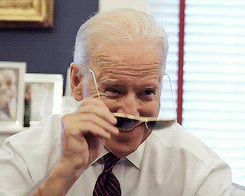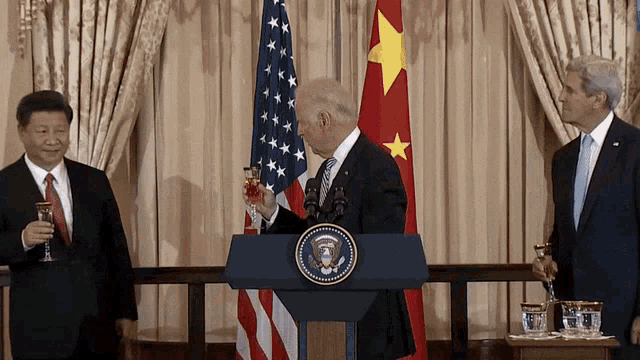The eagle-dragon face-off
The US and China are locked in a competition for global influence, short of a war
Good morning! A big hello to readers who signed up this week. Welcome to The Intersection, The Signal's weekend edition. This weekend we talk about the rising tension between US and China. Also in today’s edition: we have curated the best weekend reads for you.
If you enjoy reading us, why not give us a follow at @thesignaldotco on Twitter and Instagram.
“They… achieved the expected effect,” the People’s Liberation Army (PLA), describing its long-range live-fire drills near Taiwan on Thursday, said on Weibo.
The PLA launched its biggest military exercise around Taiwan soon after US House Speaker Nancy Pelosi left Taipei. Pelosi’s visit, meant to assert Taiwan’s independence and democratic kinship with the US, was a provocation for China, which considers the defiant island nation a rebellious territory waiting to be unified with the mainland.
The PLA fired 11 long-range missiles in a show of unprecedented aggression. Five of the projectiles landed in the exclusive economic zone of Japan–a major rival, US non-Nato ally and member of the US-led anti-China grouping, Quad, which includes India. It also broke off military and climate talks with the US. That is China exhibiting to the world the cost of poking the dragon.
“In some ways, Pelosi’s visit played into Xi’s (Jinping, Chinese President) hands, as it allows Beijing to paint the US as a provocateur,” says Micheal Kugelman, deputy director and senior associate for South Asia at the Washington-based Woodrow Wilson International Center for Scholars. “This can score him some populist points and fire up a public struggling with the pandemic and economic slowdowns,” Kugelman told The Intersection. Nationalist fervour poured out in China with citizens going ballistic on local social media, even causing a brief Weibo outage. Some of it was believed to be state-sponsored.
Domestically, the incident has helped shift focus from the Chinese government’s harsh zero-Covid policy, business slowdowns, and economic travails ahead of the Party Congress later this year where President Xi Jinping is expected to cement his position as the head of the party, state and military. Externally, nothing much changes except a lot of sound and fury, most of which appears to have been anticipated and priced in. The clearest indication came from the US and Asian markets that barely blinked in the past few sessions.
“No red lines have been crossed by Beijing,” says Neil Thomas, China analyst at the Washington-based Eurasia Group. “The economic and political sanctions that China has announced are fairly underwhelming,” Thomas told The Intersection.
That does not mean the long-drawn competition between the US and China for global influence will take a breather. The two superpowers circling one another have rewritten global relationships, altered trade flows and rewired business networks. The competition is perhaps now entering a decisive phase at the other end of which the world might look very different. In his insightful book, The Long Game: China's Grand Strategy to Displace American Order, Rush Doshi, founding director of the Brookings China Strategy Initiative, writes that Beijing believes this decade will determine the outcome of a competition for global influence.
“The world is undergoing great changes unseen in a century, but time and momentum are on our side. This is where our force and vigour reside, and it is also where our determination and confidence reside,” Doshi quotes Chinese President Xi Jinping as saying soon after a riotous mob broke into the Capitol in Washington on January 6, 2021.
“US-China relations are only going to get progressively worse,” says Thomas. “This new dynamic of strategic competition began during the (Donald) Trump administration and it is also a response to changes in Chinese foreign policy.”
The arrival of the Donald Trump presidency in January 2017 followed by China’s Party Congress in October that year, where Xi laid the groundwork to indefinitely stay in power, changed how the two countries saw themselves in the global arena. While the US retreated from the world stage under Trump, China pushed forward, enshrining the “Xi Jinping Thought on Socialism with Chinese Characteristics for a New Era” in the country’s constitution.
Chinese Checkers
Key to China’s quest for “its rightful place in the world” (read global dominance) is growing its economic and technological clout. Xi’s Silk Road Economic Belt and Maritime Silk Road initiative, simply known as BRI or the Belt and Road Initiative, is a centrepiece of the strategy. Harking back to the ancient Silk Road—a trade route that connected Europe, Middle East and Asia—it envisages building a modern global logistics infrastructure largely overseen by China. According to the World Bank, about 71 economies lie along the BRI corridors and if completed, could increase trade between 2.7%-9.7%, income by up to 3.4%, and lift 7.6 million people out of extreme poverty.
The BRI’s aim of raising China’s stature as a power capable of taking on global projects began faltering when the pandemic revealed dubious financing arrangements and shady contracts. One study found that the BRI pushed several middle and low-income countries to “accumulate $385 billion in hidden debts”. At least one country, Sri Lanka, went bankrupt and plunged into turmoil, unable to service foreign debt, a significant part of which was borrowed from China to build infrastructure. It gave up ownership of the Hambantota port to China because it could not repay loans.
Spanner In The Wheel
The pandemic could not have come at a worse time for Xi, who had just hit his stride in cleaning up the Chinese private sector, especially Big Tech. The government’s clampdown on tech companies wiped out billions of dollars in value and caused a capital flight. The introduction of the three red lines debt policy broke the back of the real estate sector and threatens to wreck other segments of the economy as well. Xi’s insistence on following a Zero-Covid policy has not helped.
“The lockdowns that happened in Shanghai, Beijing and other parts of the country were more costly than the Chinese establishment had anticipated,” says Amitendu Palit, senior research fellow and research lead (trade and economics) at the Institute of South Asian Studies (ISAS), National University of Singapore.
In May, Premier Li Keqiang warned of large scale job losses and told local governments that they were on their own. “The Chinese federal government has never confessed to its inability to fund (provincial governments),” Palit said, indicating that the Chinese economy might be in much worse condition than is apparent from outside. China’s overall debt, which was as high as 266% of GDP five years ago, has now shot up to 275% of GDP. At 62% of GDP, household debt is precariously high even as defaults rise.
Poor household spending is slowing down the vaunted domestic market. Smartphone shipments slowed to their lowest in a decade. More than two-thirds of the Chinese population owns smartphones, but their replacement rate has slowed from 18 months to three years.
To add to the domestic woes, even the most successful Chinese companies are facing headwinds overseas. Xi’s flagship foreign policy project BRI has created what the Financial Times described as China’s first overseas debt crisis, as loans taken by several countries and projects had to be renegotiated. The country’s forex reserves, deployed to fund the ambitious projects, fell from a peak of $4 trillion in 2014 to about $3 trillion now.
“The Chinese economy has developed prominent economic weaknesses and that might also have a bearing on the way China responds to Taiwan,” says ISAS’s Palit.
US Offensive
In 2013, Shuanghui International Holdings purchased Smithfield Foods, the US’ largest pork producer and owner of 1,40,000 acres of farmlands for $7.1 billion. It has invested more than $140 billion in US assets including hotel chains, logistics firms and tech companies. But the Smithfield acquisition, funded by the Bank Of China, is the biggest asset purchase by China in the US to date.
That purchase was a small piece of a long term plan to prepare for food shortages. By the end of 2025, China will likely face a grain shortfall of 130 million tonnes. China has 294 million acres of arable land for 1.4 billion people while the US has 375 million acres of land for 330 million people. US farm exports to China rose from $17 billion in 2016 to $27 billion in 2021. New laws in the US will likely block it from buying more land.
Although Trump pulled the US back from many global fronts, he identified China as its foremost threat and began erecting hurdles in its way, especially in the US. He set off a trade war with China, picking out 1,333 products in 2018 to impose tariffs (pdf) on. The former President went on to threaten tariffs on all Chinese imports, sought to ban apps such as TikTok and WeChat, and imposed sanctions on several Chinese entities and individuals. The administration designated news agency Xinhua and television network CGTN as foreign agents. It also added scores of companies to the Bureau of Industry and Security Entity List, requiring tough licensing norms and other restrictions.
President Joe Biden withdrew some of Trump’s executive orders but kept the regulatory pedal to the metal. Several Chinese companies face delisting from US exchanges for opaque ownership structures through offshore variable interest entities or VIEs and inadequate data disclosures. Of the 261 US-listed Chinese firms, 184 have VIE structures, according to a March 31 China-US Economic and Security Review Commission (ESRC) note. The scrutiny intensified after a massive accounting fraud was unearthed at NASDAQ-listed Chinese coffee chain Luckin Coffee.
Rising interest rates in the US have made it a capital magnet but increasing regulatory and political risk will make investors rethink China. “Companies will reallocate their future investments away from China than they would have otherwise. They will produce in China for China, but have other supply chains (Apple in Vietnam, for instance) to produce for the rest of the world,” says Eurasia’s Thomas.
Realpolitik
Biden has determinedly pushed to recoup lost ground globally, strengthening alliances in Europe and building new bulwarks in Asia even as China muscled up militarily and stitched up key alliances, such as with Russia and Pacific island nations.
“It is not lost on China that it is important for the US to remain committed to Taiwan,” says ISAS’s Palit. “For instance, the US’ proposed semiconductor alliance is a non-starter without Taiwan.”
An important element of the US strategy against China would be to deny hi-tech knowhow, including knowledge to make advanced chips. Its passing of the CHIPS and Science Act and the proposed semiconductor alliance are not only aimed at starving China of technology, but also of supply.
Yet, a lot of it is still in the air. Wilson Center’s Kugelman says Washington’s ability to shore up its own influence hasn’t translated to an undermining of China’s influence. This is largely because much of what the US has done is aspirational, such as the Blue Dot Network for infrastructure. “Lots of visions and frameworks, but not much execution. China is so out in front and has done so much, it’s hard for the US to make a dent, try as it might.”
He says efforts to counter China and Russia have struggled to gain as much traction in the developing world as in the West.
That is perhaps because many countries are wary of both China and the US and do not want to put all their eggs in one basket. Unlike the US, Asian economies have to contend with Chinese power in their neighbourhood. The military exercises near Taiwan have shown that even without an active conflict, China can create mayhem, disrupting travel and trade. Palit says it is a message that would have gone out to the region that there is a cost and consequences for messing with China. After it cut off talks, Biden’s top climate diplomat John Kerry said it would “punish” developing countries the most.
As for Taiwan’s reunification with the mainland, Eurasia’s Thomas says the only authoritative timeline that Xi has implied is that it is part of the National Rejuvenation, 2049. That is, unless the US or Taiwan move to change the cross-straits status quo. There is no indication that they want to. The two-and-a-half hour conversation between Biden and Xi even as the White House was trying to get Pelosi to postpone her visit was a clear indication that the two countries are well aware of the stakes involved.
ICYMI
Musical mediocrity: Whether it's to cancel your cable service, obtain help with a technical issue in your gadget, or get clarifications about payments, calling customer service is unavoidable. But, by and large, we tend to hear recorded music on the other end of the line more than the person’s voice. Did you know that the boring background music is a big business itself? Its revenues are projected to increase from an estimated $1.9 billion to $3.5 billion. Read the full story here.
Virtual vs. real: In the last 10 years, a slew of entertainment companies in China and Japan have invested their time, money and energy in developing virtual idols. This includes performing artists who appear via hologram, animated personalities who live stream themselves chatting with fans, and the like. Most of these digital celebrities depend on a single human – who wears a motion capture suit, and puts forth their voice and gestures to bring them to life in real time. However, these actual actors and actresses behind the scenes are often sidelined.
The 🧿 trend: As a desi kid, you must have heard the phrase “nazar lag jayegi” many times. Now this ‘nazar’ or the 'evil eye' is all over social media. The blue and white circular emoji has become so popular that you can see it everywhere in captions and messages. Whether a friend sharing pics or a life update. Even celebrities like Gal Gadot and Deepika Padukone are going with the trend. The concept can be out of superstition, but it is also a form of positive energy for many.
The great hunger: Imagine a world where drought is so extreme that people feed on seeds, cactus leaves, and perhaps even boiled leather sandals. This horror is a reality in southern Madagascar, where rain hasn’t fallen in three years, and where water is liquid gold. How did the land of lemurs and baobab trees get to this point? This visual story traces the roots of the world’s first climate change-induced famine– which locals refer to as kere, or ‘the hunger’.
Rise and fall: Within a short span of time, Zilingo, along with its celebrity boss—Ankiti Bose became an example in the world of ecommerce startups. Everyone was fascinated how a young leader, with her charm and confidence managed to pull in high-profile investors including Sequoia. But soon, the company which was ruled by threatening employees crumbled. The company was not able to file annual financial statements for two years but somehow kept attracting investors. The slack within the company’s internal management ultimately led to the fall of Bose and her company.
Trigger warning: harassment
Justice Delivered: Hunter Moore ran a revenge website, IsAnyoneUp.com which included explicit images of women and their personal information, including email addresses. All this came to light because of Charlotte Laws, who decided to seek justice for her then 24-year-old daughter. But she didn't stop until Moore landed in jail. This profile on Laws by The Daily Beast is worth a read. The Most Hated Man On The Internet, the latest true crime documentary up on Netflix is based on Moore.
Enjoy The Signal? Consider forwarding it to a friend, colleague, classmate or whoever you think might be interested. They can sign up here.
Want to advertise with us? We’d love to hear from you.
Write to us here for feedback on The Signal






